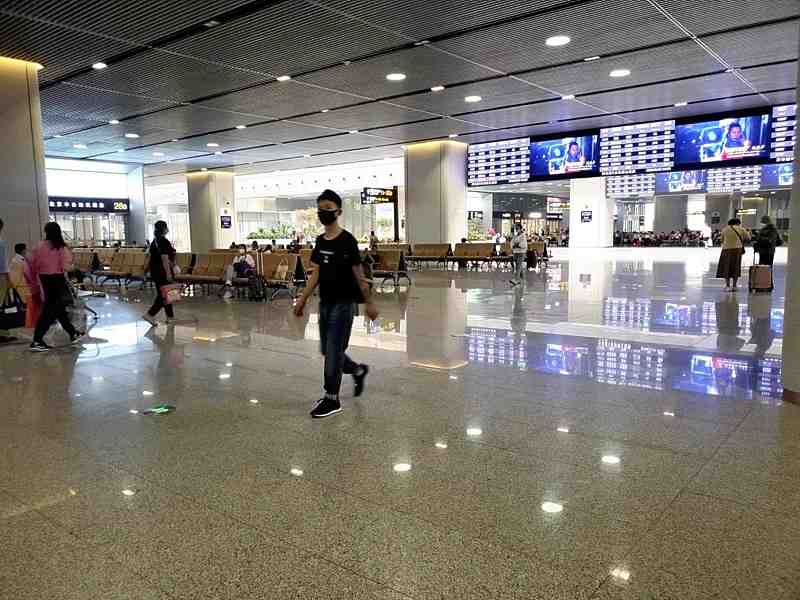COVID-19 policy puts brakes on China’s economy

Beijing Fengtai Station is devoid of travelers on Saturday, despite it being the first day of a three-day weekend.
14:15 JST, September 12, 2022
BEIJING — A shadow has fallen over China’s economy amid a resurgence of infections with the novel coronavirus. Nearly 50 cities are under lockdown, with factories shuttered and over 200 million people forced to limit their activities.
With the National Congress of the Communist Party of China that will confer a third term for President Xi Jinping expected in the middle of October, Xi’s administration is placing greater priority on containing the outbreak than on the economy.
This past weekend was a three-day holiday for the Mid-Autumn Festival. On Saturday at Beijing Fengtai Station, one of the capital’s gateways, few travelers could be seen.
Beijing authorities had asked about 22 million residents to stay in the city as much as possible over the holidays. Being the host city of the party congress, Beijing has been on high alert for the influx and spread of infections associated with the movement of people.
According to China’s transport ministry, 24 million people were expected to travel per day during the holidays, down 32% from last year and 53% from pre-pandemic 2019 due to tough government restrictions. From Saturday, passengers on high-speed trains and flights were required to take a PCR test within 48 hours of departure. If travelers are infected in the city they are visiting, they will be required to quarantine for several days before returning home.
Compared to previous years, the trend toward cheaper and shorter trips has become prominent. Economists say that the ongoing struggles of the tourism and travel-related industries, which account for a tenth of gross domestic product, will weigh on economic recovery.
In China, the phrase “Golden September and Silver October” has been used for these autumn months as consumption rises for shopping and travel amid long holidays such as the Mid-Autumn Festival and the National Day of the People’s Republic of China. The expansion of lockdowns, however, has led to a sharp increase in the number of residents under restrictions on their daily life and even going to work.
The inland city of Chengdu, Sichuan Province, has become a center for the auto industry, but on Sept. 1, the first day of a lockdown there, Sweden’s Volvo Car AB temporarily shut down its factory.
As of Sept. 6, a total of 49 cities in China were either totally or partially under lockdown, according to Nomura Holdings, Inc. The number of affected residents increased by 80% from the previous week to about 290 million, or 1 out of every 5 people in China. These cities and regions account for 24.5% of the country’s GDP.
The scale of the impact approaches almost that of the lockdown on Shanghai from the end of March to the end of May, although a comparison cannot be easily made because calculation methods differ.
China is in a difficult situation to meet the government’s target of around 5.5% GDP growth for 2022.
Daiwa Institute of Research Ltd. chief researcher Naoto Saito estimates that the figure will remain at around 4%, but if the economic stagnation caused by infections intensifies, “the figure could fall into the 2% range.”




